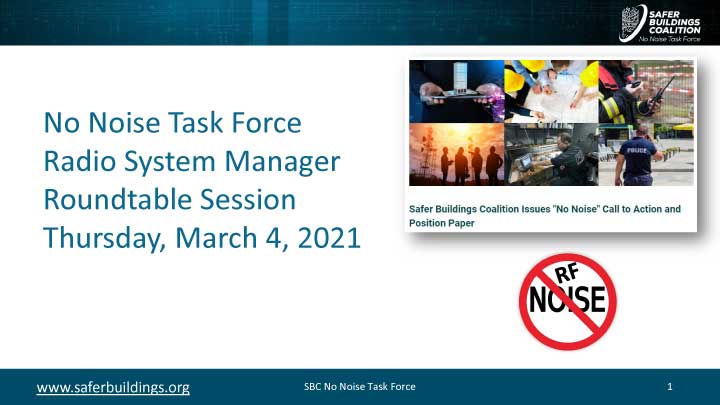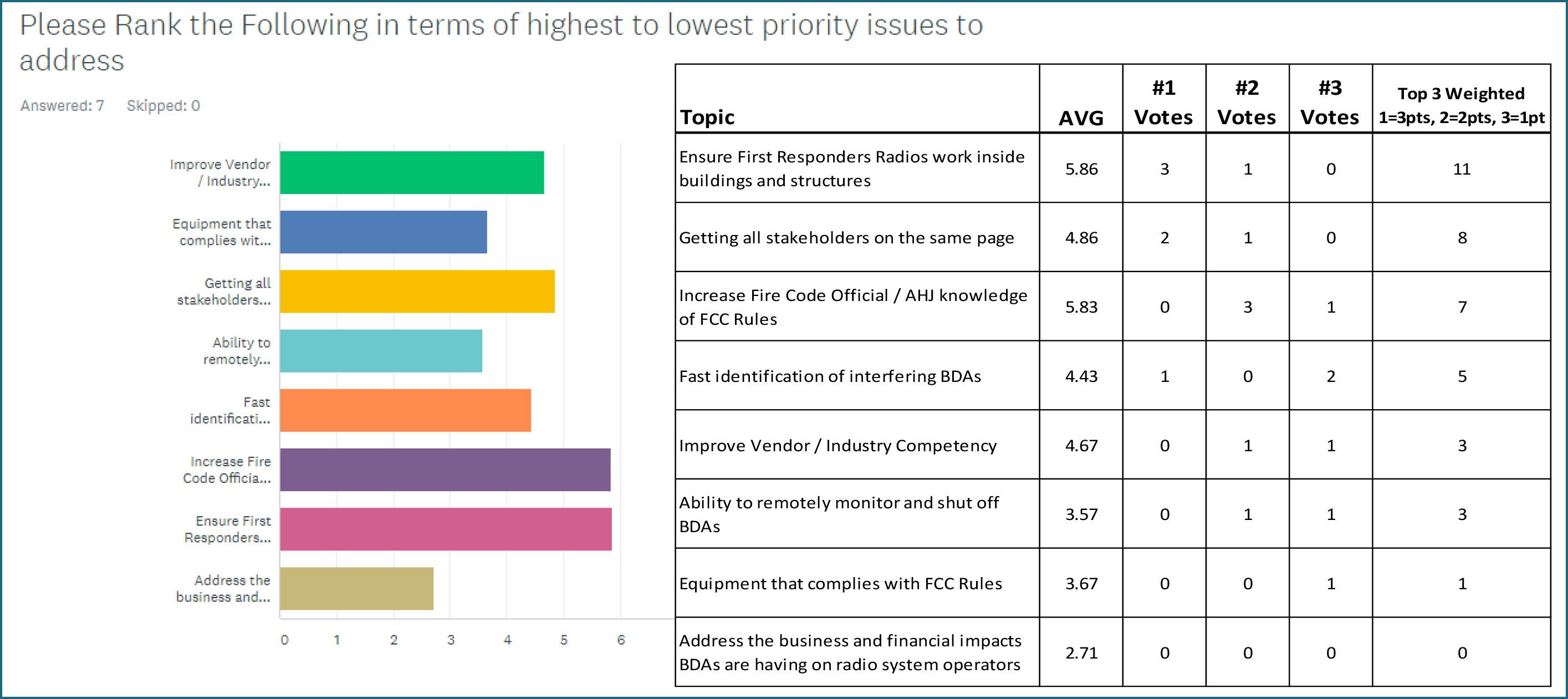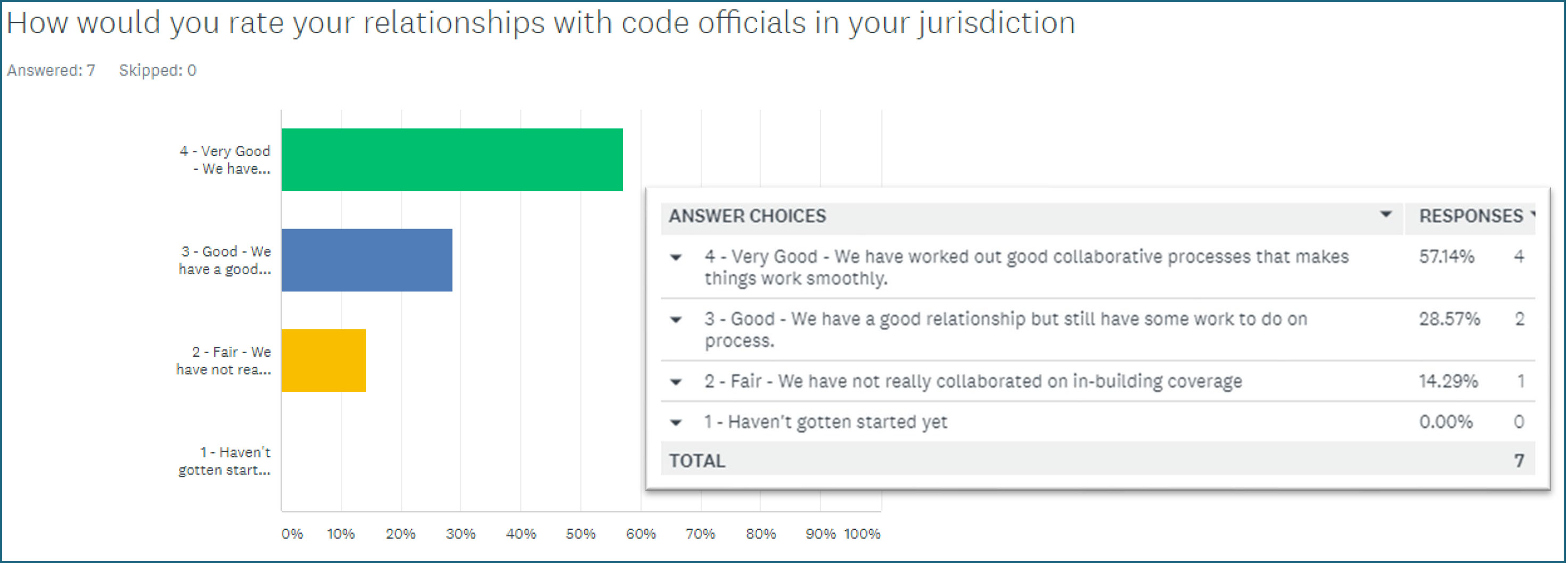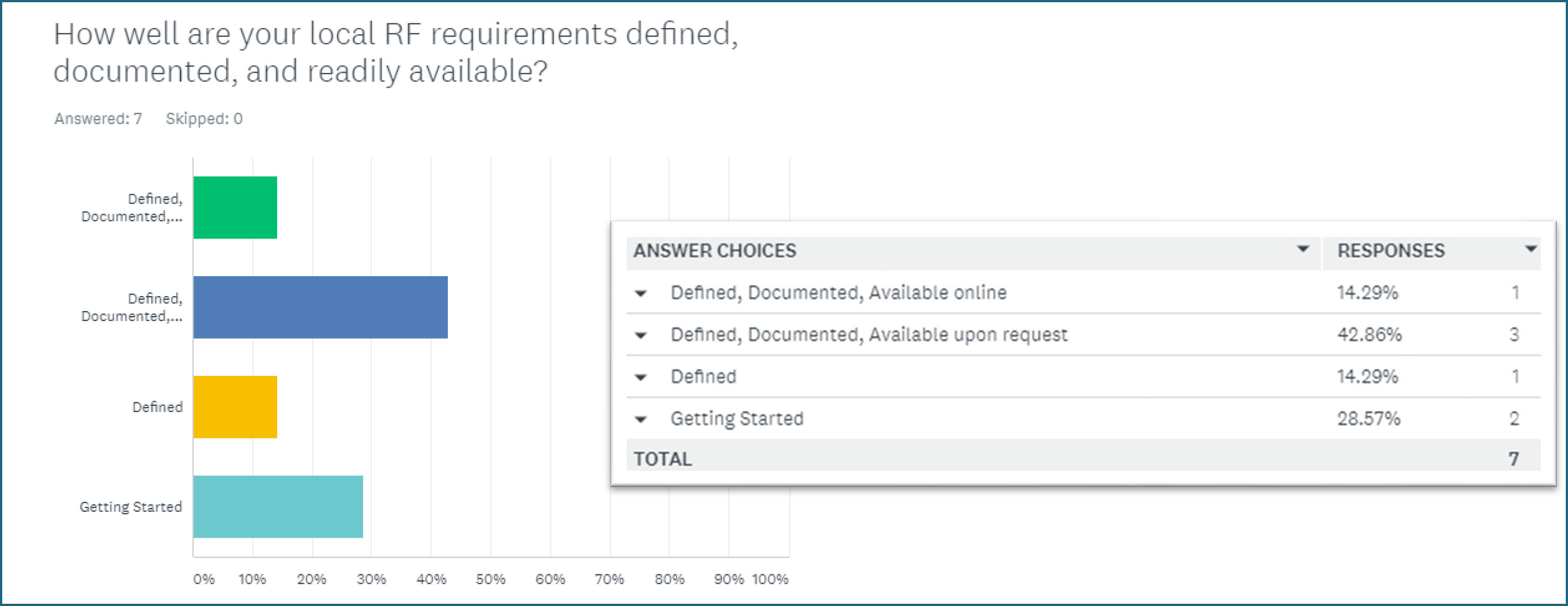
Safer Buildings Coalition Issues “No Noise” Call to Action and Position Paper
Posted on April 5, 2021
On Thursday, March 4, 2021, the No Noise Task Force held a Radio System Manager Roundtable session. The roundtable group discussed the key objectives of the task force:
- Combat RF interference (Noise!) caused by improperly deployed in-building Signal Boosters.
- Affirm and reinforce the essential role of Frequency License Holders in the deployment of Signal
Boosters.
- Affirm the essential need for reliable wireless coverage inside buildings for both First Responders and the public, and to reinforce the essential role of consistent codes and standards interpretation and enforcement in achieving that goal.
The desired outcomes include:
- Evaluate, refine and affirm the principles for safe and effective in-building communications
- Emerge with actionable recommendations, processes, standards, or other guidance that will lead and assist all stakeholders toward an ideal public safety communications environment.
See related article by CLICKING HERE to see:
- Task Force Purpose
- Task Force Members & FCC Resources
- Download the No Noise Position Paper
- Sign Up to Have a Voice
A short survey among the group was conducted to determine issue priorities, jurisdictional relationships, RF documentation, and pain points. Below are the results of the survey:
Question: Please rank the following in terms of highest to lowest priority issues to address.
Result Summary: The top two priorities were: 1) Ensuring first responder radios work inside buildings & structures 2) Increase fire code official / AHJ knowledge of FCC rules.

Question: How would you rate your relationships with code officials in your jurisdiction?
Result Summary: Almost 80% of the respondents have a very good / good relationship with code officials.

Question: How well are your local RF requirements defined, documented, and readily available?
Result Summary: Almost 60% have their RF requirements defined, documented and available (either online or upon request) with the remaining respondents not having documents available.

Additional feedback from respondents regarding concerns that lack public safety coverage include:
- Primarily for law enforcement. A lone officer holding an uncooperative suspect at gunpoint, and who can’t call for help. This is what keeps me up at night.
- First Responder Safety
- Unfortunately, the frequency license holder is the last to know if ever informed of an ERRCS solution being deployed in Sacramento County. We need all stakeholders on the same page and that involves the frequency license holder being contacted from the very start of the ERRCS process and overseeing the entire process that involves the radio frequency usage.
- I am concerned that if they implement a DAS in the future that it is done poorly.
- BDAs are being treated as the silver bullet to correct radio issues within buildings. Simulcast systems -large and small -analog and digital -often have a bad reaction to artifacts from communications equipment that is not integrated into that system.
- We should prioritize which ones need to be addressed first.
|